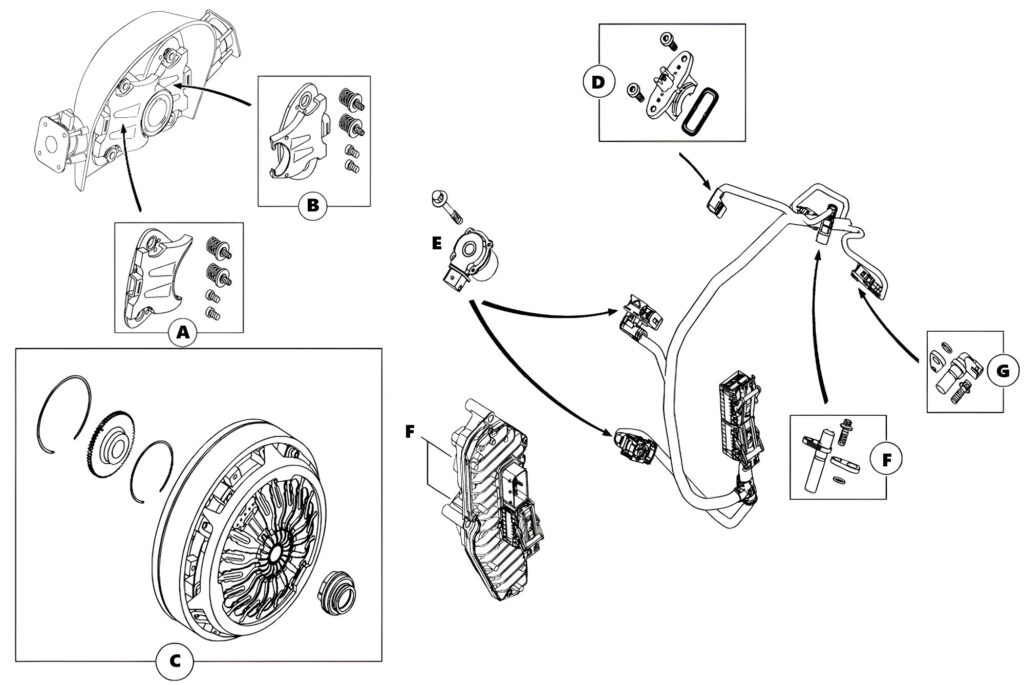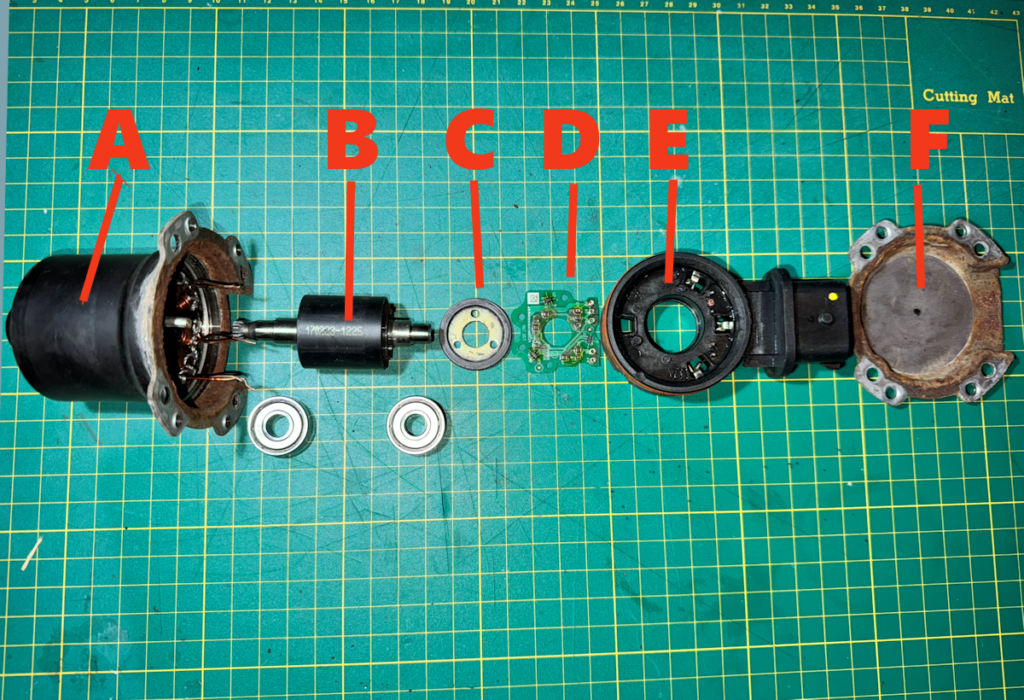I recently purchased 2017 Smart ForTwo with a transmission fault, other than the gearbox issue it was a super clean and tidy car so I decided to take a punt being fully aware that these are nothing like the earlier pre-2015 models.
The symptoms were lots of noise in Reverse, 2nd, 4th & 6th and a “Clutch travel sensor signal 2 – Signal comparison failed” stored DTC.
Unlike the earlier smart cars which had an electrically actuated single clutch manual transmission the automatic the later “Twinamic” version of the 2014 to 2019 (A453) Smart ForTwo & ForFour utilises a Getrag 6DCT250 6-speed dual clutch automatic transmission.
As far as DCT’s (dual clutch transmissions) go it is a fairly simple design with two motor driven clutch actuators and an all in one shifter module with two internals motors which drive the selector drums in the gearbox.
There are also three speed sensors which I assume are one for each output shaft and one for the input shaft.
- A. Clutch actuator (outer) (A4539065201)
- B. Clutch actuator (inner) (A4539065101)
- C. Dual clutch assembly. (A4532500600)
- D. RPM Sensor (A4159056100)
- E. Clutch actuator motors (M14=Upper, M15=Lower) (A4539063001)
- F. Combined TCU and shifter motors (A2C73768910)
- G. RPM Sensor (A4539053101)
- F. RPM Sensor (A4539053301)

After inspecting the transmission it was very obvious straight away that the lower motor (M15) was showing signs of corrosion and water ingress, after removing it I also found the shaft was very hard to turn and it made lots of noise.
I replaced it with a known good used module and performed the clutch adaptions using DDT4ALL and the transmission issues were resolved.

- A. Housing & stator windings
- B. Motor core / poles
- C. Reference magnet
- D. PCB / Hall effect sensors
- E. Base
- F. Lower plate
